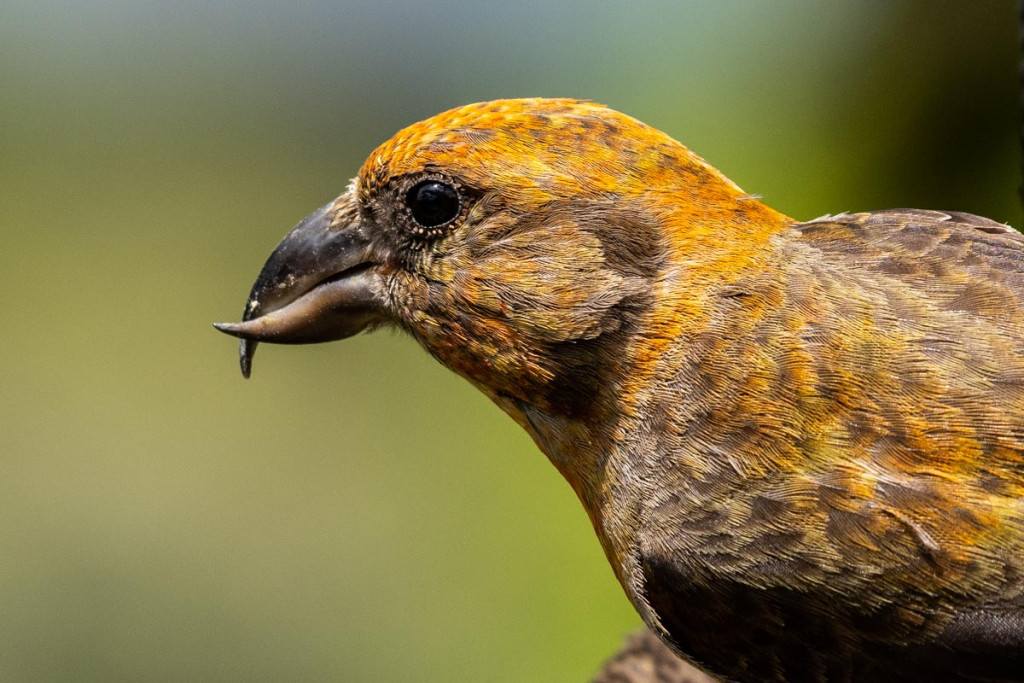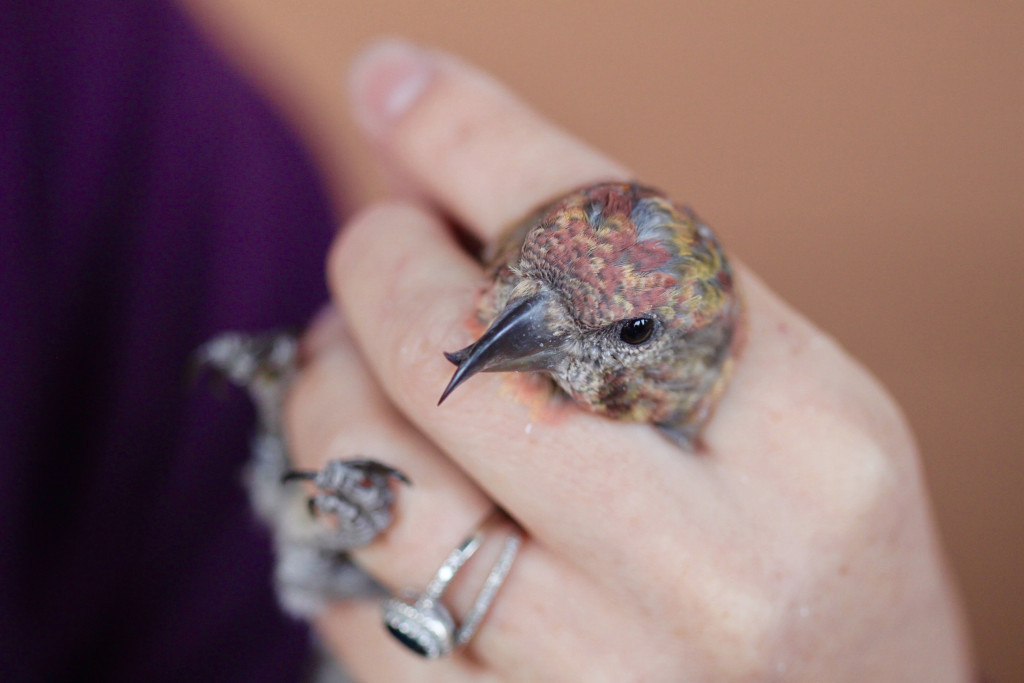
By Delanie Bruce, Education Manager, Bird Conservancy of the Rockies & NGPC
The red crossbill, Loxia curvistra, is a peculiar finch found among the spruces, firs, pines and hemlocks of coniferous woodlands. It is one of three finch species in North America that has an unusual, but spectacular beak. Per its name, the crossbill has a crossed bill. This specialized feature makes them reliant on pinecone crops for food, which determines the species’ movement across the landscape.
A Nomadic Bird
Crossbills are a truly nomadic, wandering species. Unlike other bird species that fly south for the winter and north for the summer, crossbills follow no true migration pattern. Crossbills will move away from their typical range during times of low pinecone crops; this movement is called an irruption. Irruptions usually happen every couple of years, when crossbills move out of the boreal forests of Alaska and Canada in search for more food in any direction, making their movements difficult to predict and track.
One way to track the general trend of where red crossbills might be located and where they have been over multiple seasons is by utilizing the community science platform, eBird. Created and managed by the Cornell Lab of Ornithology, eBird data is used to document bird distribution, abundance, habitat use and trends over time. While eBird can provide a good overview of overall population trends, bird banding is one way to track individuals.
Bird Banding
Bird banding is the study of birds to gain a better understanding of species migration routes, timings and movements, plus range limits and average life spans. Individual birds are harmlessly trapped and fitted with a metal band, so that if the bird is recaptured or found elsewhere, scientists will know when and where it was first banded.
All bird banding data for the United States and Canada is housed with the United States Geological Survey Bird Banding Laboratory. Since 1960, over 16,000 red crossbills have been banded in the United States, 977 banded at our Wildcat Hills bird banding station alone.

Journeys
Bird Conservancy bird banding stations in Nebraska are only operational during the fall migration. A crossbill’s “starting point” is when it was first banded, either at Wildcat Hills or Chadron State Park. Since 2007, 980 red crossbills have been banded between the two stations, of which we know of one of these birds, banded at the Wildcat Hills station, has been recovered elsewhere. This crossbill was first banded among the ponderosa pines of Wildcat Hills on Oct. 4, 2011, and a year and a half later, it had journeyed from the high plains of western Nebraska to where it was recovered on March 17, 2013, near the San Juan mountains 10 miles east of Durango, Colorado.
Of the over 16,000 red crossbills that have been banded since 1960 nationwide, only 48 of these birds have been recaptured at locations other than their original banding site. One crossbill was encountered over 1,500 miles away from its original banding site! First banded near south Quinault, Washington, this crossbill traveled over 1,500 miles over the span of two years, likely up the coast of British Columbia and all the way to Mount Jumbo Trail, just a few miles south of West Juneau, Alaska.
A few other crossbills have been encountered again over 1,000 miles from their original banding site, with the majority encountered again 200 miles or less away.
Visit a Bird Banding Station
We may not know the exact journey of this irruptive and sporadic species, but with the help of bird banding data and reported sightings from birders across North America, we can piece together a near-complete picture of where red crossbills are going based on where they’ve been.
Cone crops from fir, pine, spruce and hemlock trees are the best indicators to predict where crossbills are located and where they will be throughout the year. Fall 2022 was a slow season for red crossbills banded at Wildcat Hills, with only one individual captured, which may indicate good cone crops up north.
Stay tuned for the results of this fall’s bird banding season. Will red crossbills stay up north? Or will they fly south to the ponderosa pines of the Pine Ridge regions of Nebraska? If you’d like the opportunity, though not guaranteed, to see a red crossbill up close and personal, come visit us at the Wildcat Hills bird banding station at Wildcat Hills State Recreation Area now until Oct. 12, 2023.
